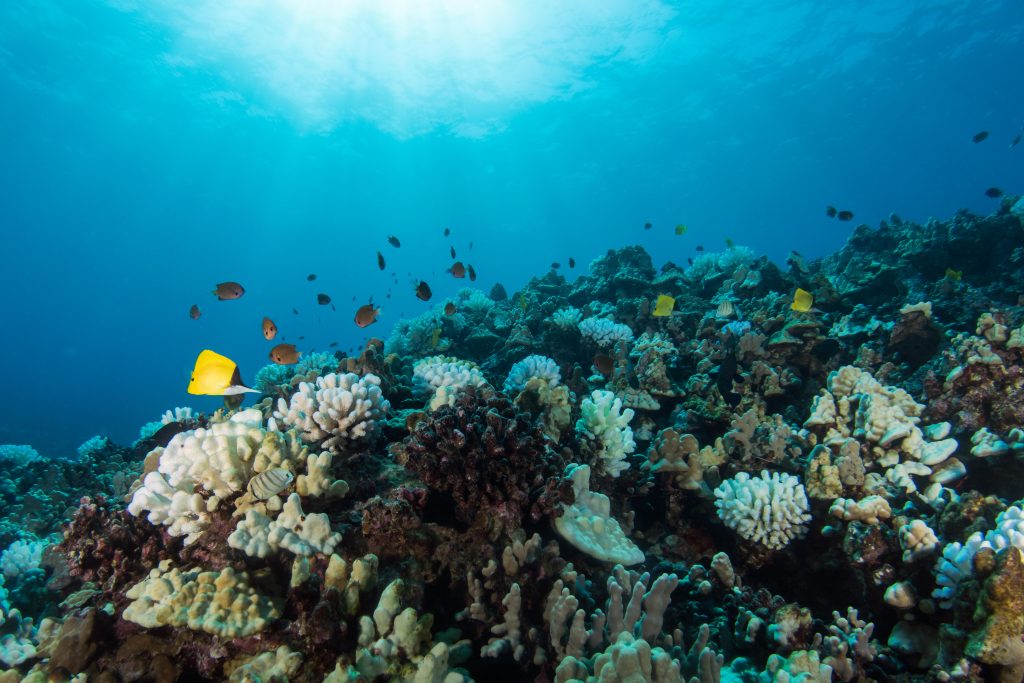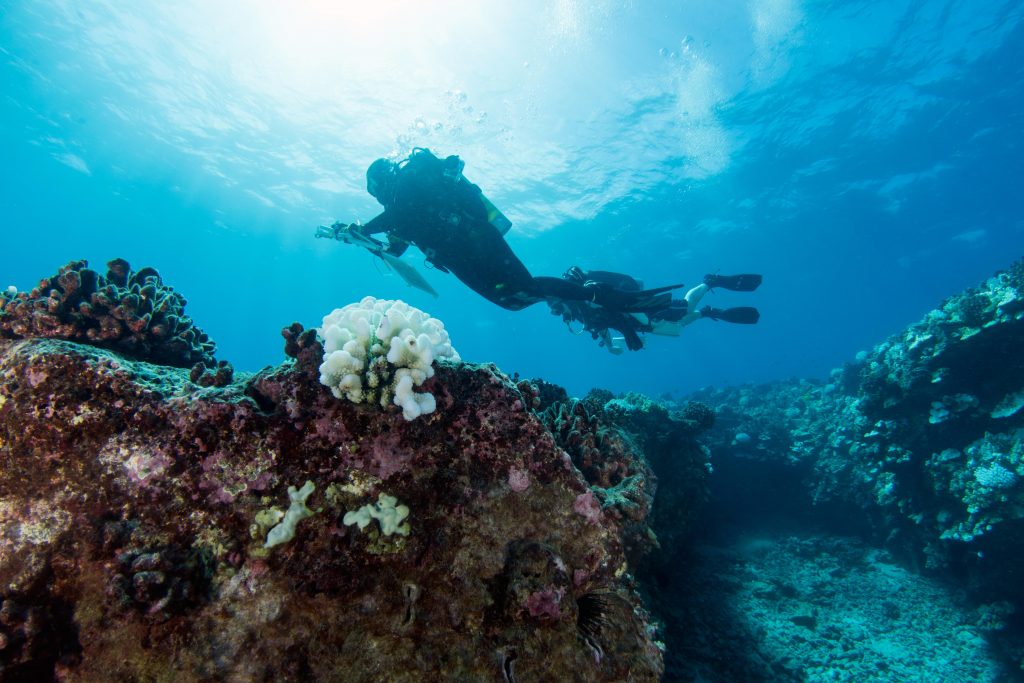Coral Reefs in West Hawaiʽi Showing Signs of Recovery
Nearly four years after the worst bleaching event in the state’s history, coral reefs in West Hawaiʽi are stabilizing and poised to recover, according to scientists from The Nature Conservancy.

Photo: The Nature Conservancy of Hawai‘i.
Higher than usual ocean water temperatures in 2015 caused the first statewide coral bleaching event. TNC surveys revealed that an average of 60% of corals in West Hawaiʻi bleached, with some reefs experiencing up to 90% mortality. Corals bleach under stress, and severe or prolonged stress can lead to death.
For the last three years, TNC scientists have studied West Hawaiʻi’s coral reefs to identify the most resilient, meaning they can resist or recover from the stress of warmer ocean temperatures.
“Bleaching events like what occurred in 2015 can overstress a coral reef to the point where it may never recover,” said Dr. Eric Conklin, director of marine science for TNC’s Hawaiʻi program. “We surveyed over 14,000 coral colonies at 20 sites along the West Hawaiʻi coast from Kawaihae to Keauhou and were thrilled to see that many of the area’s reefs have stabilized, which is the first step toward recovery.”
Surveys showed that many of the most resilient reefs are in remote areas with limited shoreline access and exposure to human impacts. These reefs had lots of corals and little or no coral disease, and there was evidence that new corals were beginning to grow.
The least resilient sites all had multiple “stressors,” including fishing pressure, land-based pollutants and runoff. “Interestingly, the number of stressors affecting an area, not the severity of a single one, was the most important factor,” said Kim Hum, the Conservancy’s marine program director. “Reefs that are fighting the impacts of several stressors are more susceptible to temperature stress, making them more likely to bleach and less able to recover if they do.”

Photo: The Nature Conservancy of Hawai‘i.
Surveys identified 25 coral species in West Hawaiʻi. Lobe coral (Porites lobata), one of the area’s most dominant species, proved to be the most resilient—with only 50% bleaching in 2015. Cauliflower corals (Pocillopora meandrina) were hardest hit—with 98% bleaching—but recent surveys show that they are beginning to recover.
“With more frequent and severe bleaching anticipated in the years ahead, there is a lot we need to do in West Hawaiʻi and across the state to minimize the impacts of a warming climate on our reefs,” Hum said. “We can make sure remote areas with few stressors stay that way, and we can reduce pressures from over-fishing, land-based pollutants and runoff in more populated areas.”
Currently, only 6% of State waters (out to three nautical miles) and 12% of nearshore waters (to a depth of 50 meters) have some form of management. To ensure the long-term health of Hawaiʻi’s coral reefs—and the food, jobs, and coastal protection they provide for Hawaiʻi’s residents—the State has committed to effectively manage 30% of the nearshore marine environment by 2030. The results of these surveys will help determine where and how to invest to ensure that Hawaiʻi’s most resilient reefs are protected.










